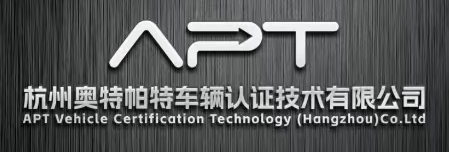
GS 35:2007
METHODS OF TEST FOR
LEAD-ACID STARTER BATTERIES USED FOR
MOTOR VEHICLES AND INTERNAL
COMBUSTION ENGINES
机动车辆和内燃机用铅酸起动蓄电池的试验方法
1- SCOPE AND FIELD OF APPLICATION
This standard is concerned with the methods of test for 6V and 12V lead-acid batteries, used primarily as a power source for starting, lighting auxiliary equipment and ignition current of internal combustion engine used in vehicles. It covers the methods of tests for the batteries covered in the standard mentioned in Sub-clause 2.1.
2- COMPLEMENTARY REFERENCES
2.1 GSO 34/2007 “Lead-Acid Starter Batteries Used for Motor Vehicles and Internal Combustion Engines”.
2.2 GSO 886 /1997 “Water for Lead-Acid Batteries”.
2.3 GSO 479/1994 “Sulphuric Acid”.
3- MEASURING INSTRUMENTS
3.1 Electrical measuring instruments The range of instruments used shall be appropriate for the magnitude of the voltage or current to be measured. For analogous instruments the readings shall be taken in the top third of the scale.
--3.1.1 Voltage measurements The instruments used for measuring voltages shall be of high impedance type and accurate to the second decimal or better. The resistance of the voltmeters used shall be at least 300 Ω/V or a digital voltmeter with an accuracy of 0.5%.
--3.1.2 Current measurements The instruments used for measuring current shall be of accuracy class 1 or better.
3.2 Temperature measurement The thermometers used for measuring temperatures shall have an appropriate range, and the value of each scale division shall not be greater than 0.5 K. The accuracy of the calibration of the instruments shall be not less than 0.5 K.
3.3 Specific gravity measurement The specific gravity of the electrolyte shall be measured with hydrometers furnished with a graduated scale, the value of each division of which is equal at most to 0.005. The accuracy of calibration of these instruments shall be to 0.005 or better.
3.4 Time measurement The instruments used for measuring time shall be graduated in hours, minutes,seconds or in hours and centihours ch ( = 1 /100 h ). They shall have an accuracy of at least ± 1%.
3.5 Dimensions measurement The instruments used for measuring dimensions shall be vernier calliper, measuring tape and the like. They shall have an appropriate range and accuracy for the values to be measured.
4- GENERAL TEST CONDITIONS
4.1 Condition of battery samples All tests shall be carried out on new battery samples. Samples shall be considered as new not later than: - 30 days after shipment date of the manufacturer in case of filled batteries; - 60 days after shipment date of the manufacturer in case of dry-charged batteries.
4.2 Preparation of batteries prior to test - definition of a fully-charged battery All tests, except those in Clauses 10 and 16, shall commence with fully charged batteries. Batteries shall be considered as fully-charged if they have undergone one of the two charging procedures of Sub-clauses 4.2.1 or 4.2.2 carried out at (27 ± 5)°C.
--4.2.1 Charging at constant current The battery is charged with 2 I20 (where I20= C20 /20) until a voltage of 2.4 V/cell is achieved. Then the charging is carried out with 2 I20 for additional 5 h. After a rapid discharge capacity test at low temperature, the same charge is applied, however the residual charging time after reading 2.4 V/cell will be only 3 h with 2 I20.
--4.2.2 Charging at constant voltage The battery is charged at 2.667 V/cell ± 0.1 V for a period of 22 to 30 h, the current intensity being limited to 5 I20 or as specified by the manufacturer. A reduction of total charging time to 16 h is admissible after a rapid discharge capacity test at low temperature.
NOTE: If neither complete knowledge of the battery construction nor a specification from the manufacturer is available, then charge according to this Sub-clause (4.2.2).
4.3 Activation of dry-charged (charge-conserved) batteries Dry-charged batteries shall be filled with the appropriate electrolyte (1.28 ± 0.01) to the maximum level indicated by internal or external marks or according to the manufacturer’s instructions.
4.4 Fully charged battery
--4.4.1 The batteries subjected to test shall be filled and charged in accordance with the manufacturer’s instructions. The level and specific gravity of the electrolyte in each cell shall be checked and adjusted after the charge on standard batteries only.
---------未完
如果你需要完整版的GS35:2007标准,欢迎联系Jacky Cheng 13958111261



